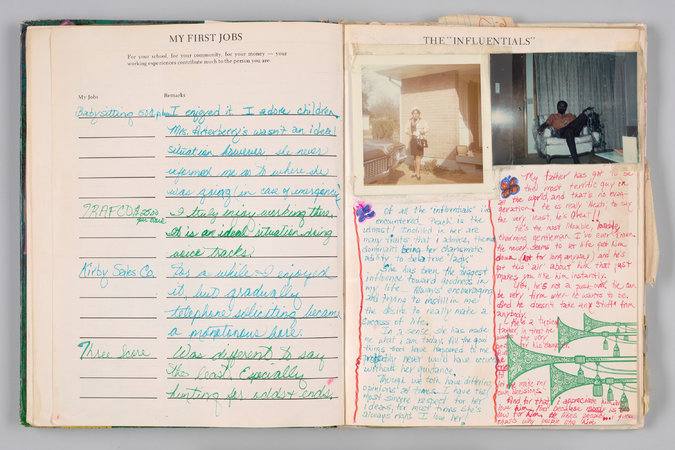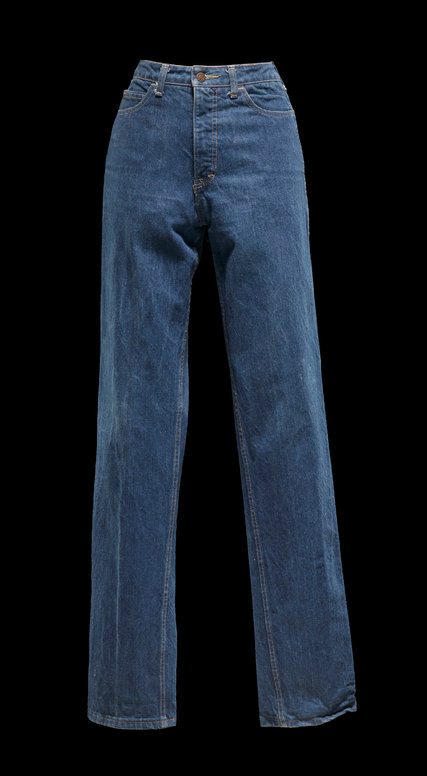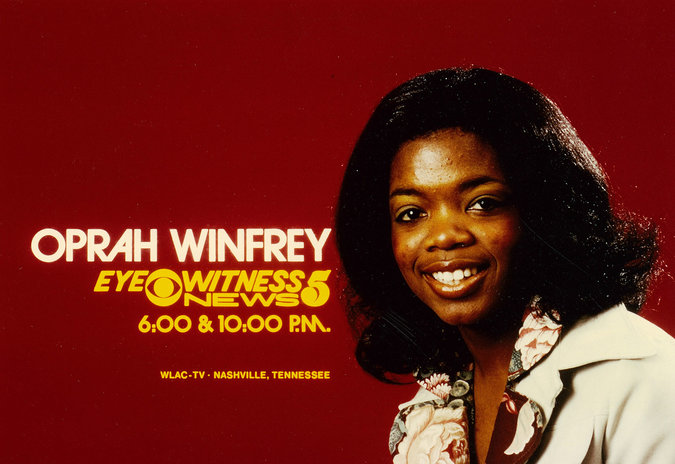Maybe the chaos extremity of current events has made us wistful for the moral authority of “Oprah Winfrey”: school massacres, police shootings of unarmed black people, men chronically mistreating women, the government’s separation of children from their migrant parents. Whenever somebody pleads for a national conversation — about anything, really — what they’re saying is, “Where the hell is Oprah?”
Many a desperate “O”-shaped Bat signal has gone up in the last half-dozen years, and in January, the country believed she was answering it. That’s one way to interpret the thunderous response to her speech accepting the Cecil B. DeMille Award for lifetime achievement at the Golden Globes. Oprah for President! As oratory, the moment really was electrifying. She endorsed the evening’s gender-equity platform, in part, by telling the story of Recy Taylor, a black woman from Alabama whom white men repeatedly raped one night in 1944. She denounced the coarseness of our national moment by praising the news media. Her pulpit gravitas would have brought down the house at a political convention. But the speech wasn’t enough. People seemed desperate to work themselves into Oprah 2020 fever.
To the extent that “queen of daytime” is any kind of office, it’s one Ms. Winfrey has never abused. She loves people, and she seems to understand the intensity of people’s love for her. But people also love power, and Ms. Winfrey’s display of it that night (and perhaps a New York Post column she retweeted) sparked pandemonium for her to ride it into Washington. President Oprah was fantasized about as an antidote to a caustic, whimsical president: the woman with the extensive “angel network” taking on a master Twitter troll, one television genius locking horns with another.
But the Smithsonian show leaves you thinking that she’d probably expect better fantasies from us. It makes you think she might be too good for whatever a candidate would have to do or say in this political climate to be elected president of anything.
BEFORE YOU EXIT “Watching Oprah,” you’ve scrutinized a case full of childhood photos, diary entries, high school letters and a signed copy of Maya Angelou’s “I Know Why the Caged Bird Sings.” You’ve soaked up the music, speeches, imagery and writing in a room devoted to the musicians, actors, authors and political movements that helped a young Oprah determine who she wanted to be. You’ve checked out the amusingly arranged spot devoted to her Oscar-losing performance in “The Color Purple” (she had her Oscar luncheon biscuit bronzed, instead) and the space that enumerates her early television-news work, including a three-minute montage of her in Baltimore and Chicago in the 1970s and 1980s that is one of the most charming pieces of editing you’re going to see. At some point, a young Ms. Winfrey, in spandex, has to put her legs up for an aerobics-class segment and jestingly complains, “Oh, you’re gonna love this shot.”


You’ve walked through the replication of the short, declining hallway Ms. Winfrey trod to get to the stage. It opens into the space devoted to the show itself — a pair of armchairs on a platform in front of a big monitor that plays a six-minute highlight reel. You’ve seen the large, almost sentient, encased Sony TV camera and the signed guest books and a copy of one of the show’s look books and some of Oprah’s actual outfits: the black turtleneck and leather pants she put on for Tina Turner, the gown from the DeMille speech, the legendary Calvins she wore the day she unsheathed the slim new figure that would vaguely haunt the show.


You’ve noticed the decades of hair styles and pivots in emotional intent, from the loaded confrontations of what the exhibition reminds us was once called “talk-back TV” to the “best self” era — basically, from her inspiring the cage matches of Jerry Springer and Maury Povich to featuring the real talk of Iyanla Vanzant, the gender decoding of John Gray and the Richter-scale-registering impact of Oprah’s Book Club. You’ve close-read the two blue cards of questions — printed and handwritten, presumably by the host — for Ms. Winfrey’s first conversation with Tom Cruise after his excruciating pounce on her sofa. (“Do you have any regrets about anything these last three years?”)

You’ve stood aghast before the giant wall printed, randomly, with every single one of the show’s 4,561 titles and airdates. “What Do You Stand For?” (4/24/00). “Tipper Gore on Depression” (6/22/99). “Wives Confess They Are Gay” (10/2/06). “Men Who Can’t Be Intimate” (7/21/88). “Sexual Abuse Ramifications” (4/14/88). “Jennifer Aniston and Beyoncé” (11/13/2008). “How Safe Is Your Home When It’s Alone” (12/1/06). “Cooking With Patti LaBelle” (7/2/99). “Donald J. Trump” (4/25/1988). “Are You Normal? Take the Test!” (12/1/2010). “What Is a Wigger?” (9/9/93). “How to Use Your Life” (4/10/00). You’ve noticed that the wall seems to reach to an absurdly illegible height. It could double as the meanest vision test of all time.
Advertisement
Continue reading the main story
There’s a lot here. And you depart it all mystified by the absurd contradictions that Ms. Winfrey’s achievements reveal about this country. Here’s a black woman who grew up poor in the segregated South and became the country’s first black female billionaire. Her prosperity inspired others to prosper, yet “Watching Oprah” is situated not far from the museum’s moral and scholastic centerpiece (“A People’s Journey”), a devastating odyssey down into — and then up out of — the creation of the United States from slavery, racism, revolution, innovation, hard work and good luck. She doesn’t seem to know how she made it, but like a lot of successful Americans, she appears to have moments when she can’t entirely believe she has.

You wonder whether the show’s integrationist philosophy arises from its host’s having been raised, reared and professionally trained in Milwaukee, Mississippi, Tennessee and the broadcast environs of Baltimore and Chicago. Just geographically, Ms. Winfrey is intersectional. But it also explains something like the trip the show took in 1987 to Forsyth County, Ga., after it purged itself of nearly all its black residents. She wanted to know what about black people so scared the white residents, and she keeps having to remind the racists in her audience that the woman interrogating them is also black.
Ms. Winfrey contributed more than $20 million to the sponsorship of the museum. So there’s an urge to distrust the intent of an exhibition like this, to say that she bought it. But her museum donation doesn’t seem at all like vanity. It’s “how to use your life,” “what do you stand for” money. Across from “A People’s Journey” sits the Oprah Winfrey Theater. Maybe she paid for a piece of that. Anyway, our tax dollars are hard at work here, too. So Ms. Winfrey just paid a little more than I did.
Nonetheless, “Watching Oprah,” in its uncompromised captioning, goes out of its way to remind you about the chronic dissatisfaction, among some black people, with the lack of attention to the crises of black America. The show includes a 1986 letter from a black woman upset that Ms. Winfrey didn’t call on her during a broadcast because she didn’t “look like an ugly, fat, uneducated, frustrated black woman which is typical of the majority of the women you allow to speak on your show.” If that was ever true (suburban white women made up its biggest demographic), it wasn’t that way for long.
This might be the only show in television history to feature a ferocious four-way argument among black women about being a Republican. You watch a moment like that, in the exhibition’s “Talk-Back TV” montage, and you remember the show’s deep roots as a roving dialogue, often through national events, tragedies and disasters, with Ms. Winfrey holding the microphone (several of which are on display). It was a show that, in 1992, devoted a handful of daring episodes to racism, including a couple after the Los Angeles riots and one that featured a panel of American Indians and a white audience actually hearing the panelists’ dismay. Even when it was in the mud, “The Oprah Winfrey Show” was determined to make so-called rednecks understand the problem with“redskins.”
ONE PROBLEM WITH being really good at your job is that people won’t let you stop doing it. But you watch enough of these montages and realize two things. First, “Watching Oprah” needs a lot more of “Oprah” to watch, more clips, segments, whole episodes, something. Second, Oprah didn’t do this work alone. She helped us do it. She was a platform. She was Facebook. Forget the presidency. She was the facilitator in chief.
The more she empowered us to speak, the better she got at knowing how her emotional algorithm could supply us with books and feelings and tools for betterment. And she took real risks to better understand this country, too.
That Forsyth County episode might have been a stunt, but it’s more audacious than Geraldo Rivera’s dragging millions of Americans into a bloody brawl with skinheads the following year. “Watching Oprah” doesn’t privilege any one episode over any other. So it’s hard, at first, to see what exactly it is about the show that matters. But then you think about that massive wall of episode titles and how it’s impossible to take it all the way in. And that incomprehensible vastness seems perfectly right, both for the enduring vitality of the show itself and the woman at its center.
Continue reading the main story
Speak Your Mind
You must be logged in to post a comment.